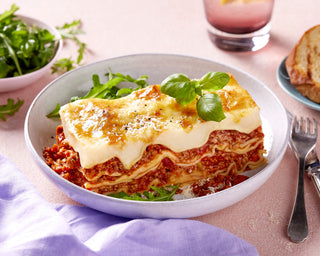Are you ever stumped halfway through a diet conversation or nutrition article thinking “what in the world are they talking about?” With complicated scientific -looking words, that may as well be another language, it’s little wonder. Well, fear not, this dictionary, curated by our team of nutritionists, is perfect for when you’re feeling stuck! Let’s get in to it...
Antioxidant: This is a substance that protects our bodies from free radicals, inhibiting oxidation and therefore protecting us from damage. Some nutritionists even refer to antioxidants as free radical scavengers. Antioxidants can be found in fresh produce like fruit and vegetables! For a more in depth understanding of free radicals and antioxidants, please read our blog here.
Cruciferous: Grouped because of their surrounding petals, cruciferous is a family of vegetables! Their family tree includes broccoli, brussel sprouts, cabbage, cauliflower and kale. A famous family for their nutritional profile of high fibre, antioxidants and sulfur -containing compounds called glucosinolates, which have been shown to have positive effects on our bodies.
Essential Amino Acids: There are nine amino acids that are essential to our body's when forming protein, they can be described as “building blocks.” Without all nine, our bodies are unable to form proteins necessary for bodily functions. Our bodies are unable to make these amino acids so it’s essential we get them through our diet! All nine amino acids can be found in animal proteins and tofu, other plant proteins don’t have the complete set, so vegetarians and vegans need to eat a variety of plant proteins together to ensure they’re meeting their nutritional needs. For more information on how to get more plant-based protein in your diet click here.
Fad Diet: This is a diet that becomes very popular for a short burst of time, without being a standard dietary recommendation. They often make unreasonable claims for fast weight loss or health improvements. If it sounds too good to be true it probably is!
FODMAP: This is a group of poorly absorbed fermentable short-chain fatty acids, that can cause discomfort to some individuals' guts! So, often these individuals will practice a Low FODMAP diet, minimising these food groups that fall into the breakdown below. For an extensive overview of the Low FODMAP diet click here.
FODMAP definition (what the fancy acronym stands for):
- Fermentable – carbohydrates that are broken down by microorganisms (bacteria) in the gut to produce alcohol or organic acids.
- Oligosaccharides – ‘oligo’ means a few individual sugars that are joined together.
- Disaccharides – two sugar molecules.
- Monosaccharides – one sugar molecule.
- Polyols – sugar alcohols.
Gut-Brain Axis: This is bidirectional communication between our brain (central nervous system) and our gut (eccentric nervous system), linking emotional and cognitive parts of the brain to our intestinal functions. For more information on this relationship and our mental health click here.
Keto: Short for ketogenic, this is a high fat, moderate protein, and low carbohydrate diet. When people follow this diet strictly, their bodies will switch to a state of ketosis, which naturally happens when we have low glucose availability, so we use available fat stores as fuel.
Macronutrient: The three essential nutritional components that the body needs in varying amounts and include carbohydrates, protein, and fats.
Micronutrient: These are chemical elements or substances our bodies require, in trace amounts, for bodily functions. Therefore, they’re essential in our diets and can be broken into two family's vitamins and minerals.
Phytonutrients: If the “phyto” part of this word sends your mind to plants, then you're in the right place! Phytonutrients are beneficial compound’s, such as antioxidants, and are found in plants like our fruit and vegetables. There are various amounts of phytonutrients, some can be responsible for the colour of fruit and vegetables. An example is beta-carotenes, which are found in oranges, pumpkin and sweet potato!
Prebiotics: Long story short, prebiotic foods feed the ‘good’ bacteria in our gut! More professionally speaking they’re compounds in food, such as fibre that increase the activity and growth of beneficial microorganism in our gut.
Probiotics: Are food or supplements that provide our bodies with ‘good’ live bacteria and increase the activity and growth of existing ‘good’ bacteria!
Preservative: A preservative prevents food from decaying, allowing us to keep products and produce for longer, decreasing food wastage and increasing food safety. There are many different types of preservatives, some being natural like salt, olive oil, and vinegar, while others are not so natural! These are the ones that can have adverse health effects, to dive deeper about what preservatives to watch out for click here!
If you have any other nutritional words that stump you or you’re not 100% sure about, please feel free to send them over to team@dinemaic.com.au and we can add them to this ever-growing nutritional dictionary.
Alicia McIntyre









